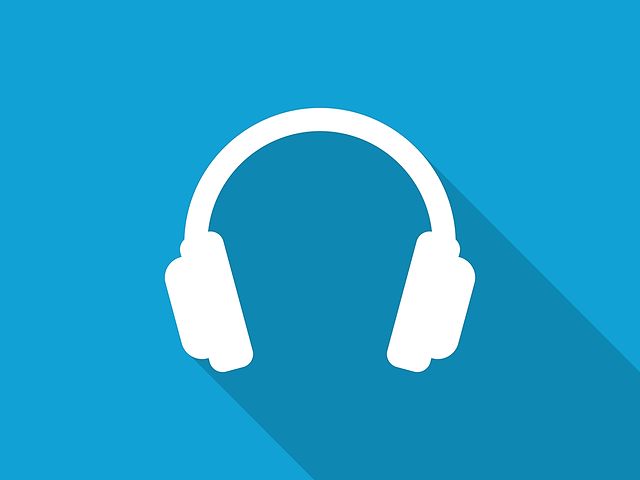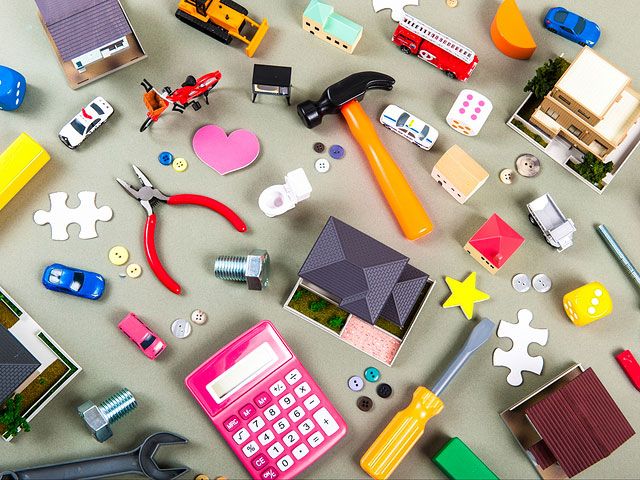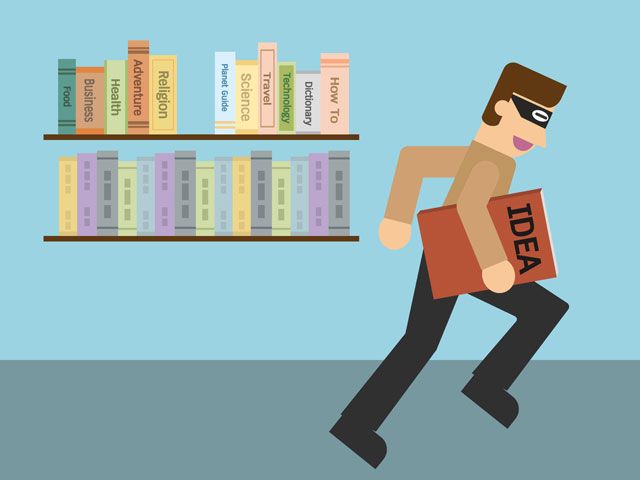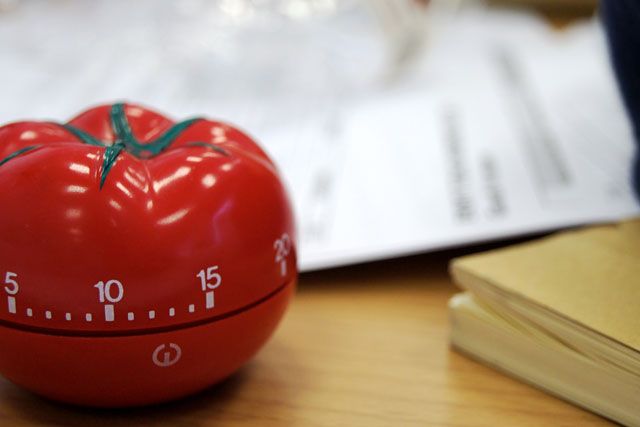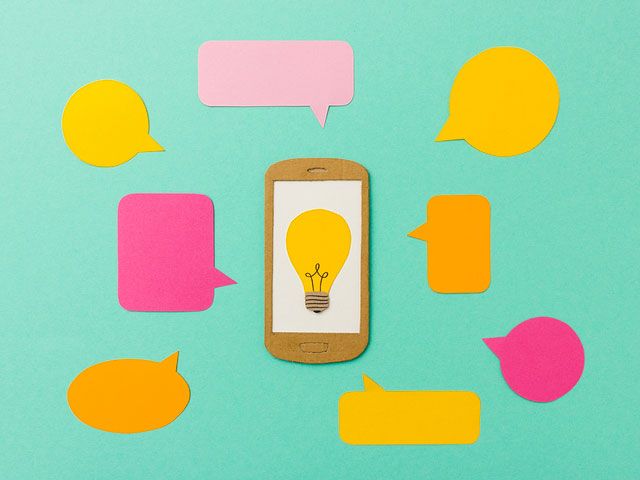What does a vintage book have in common with a camera?
Nothing actually. Unless you are someone like Erin Paysse who fashioned a pinhole camera from a vintage hardback. She now sells them on Etsy for $200 a pop. Her first DIY pinhole camera was made from an iPhone box. There's probably something like this lying around your house too.
Have you thought of making something out of it?
Creativity does not require you to be an artist. Creativity isn't reserved for the visual thinkers of the world. You can also join the tribe of creatives without an ounce of artistic talent. You just need to be inspired enough to spot an idea. And there are many ways to tap technology and use the Internet for a creative flash.
This article is about that – how you can use technology to get inspiration for anything. So, let's take care of a basic question first.
Can an App Help You Become More Creative?
"You can't wait for inspiration; you have to go after it with a club."
~ Jack London
These days, creativity is almost a basic survival skill. You'll need to come up with ideas whether you are a data analyst (it's not only about cooking the books) or a writer struggling with writer's block. Because everyone needs to answer questions. And "inspiration" is nothing but a better way to answer those questions.
Try this creativity test before you go ahead:
Breaking out from the rut of your thinking is the best way to find inspiration and new ideas. Technology and the apps it has spawned are one-touch solutions to look at things from fresher perspectives. Technology can help create a combination of routines (the creative habit) that sparks ideas.
As I tried to explain through the linked article, technology can help us step outside the box quickly and easily. It can help us defeat old habits with originality.
Really Geeky Ways to Start Searching for Inspiration
The Internet may be the first place you will use to validate your new "original" idea and find a bit of extra inspiration. So, let's break a few patterns of our own thoughts and use a bit of geekiness to find inspiration in our daily lives.
1. Play the Right Sounds to Get Distracted
Distraction can be good.
Everyone needs solitude for work, but the latest research from the labs have pulled one back for the distracted world we live in. Northwestern University psychologists found that real-world creativity may be associated with a reduced ability to block out distracting sensory information.
Lead author of the study, Darya Zabelina suggested the creative advantages of being easily distracted.
"If funnelled in the right direction, these sensitivities can make life more rich and meaningful, giving experiences more subtlety."
Many other studies have put forward the idea that music can help you solve problems. Try experimenting with different kinds of music. Experiment with ambient noise or binaural beats. Or, just plain old-fashioned jazz or Mozart. The trick is to find out the kind of musical distraction that works for you.
Click play on any of these background music tools:
2. Shift to a New Tool
Take a small step to explore the unknown.
Change can inspire creativity. Well-set ways destroy creativity. When one tool is not working out for you, switch to a new one and see where it takes you. New tools can bring nuances which you may not expect.
How about going from non-fiction to fiction? Stories have incredible power to exercise parts of your brain. So, change the genres you typically read.
Three ideas to think about:
- Use Google for searching ideas? Try the guided search from Pinterest and tap into visual stimulation. Pinterest is fabulous for designers but it is a treasure trove for inspiration of any kind.
- Used to working on Adobe Photoshop or Illustrator? Try Adobe Capture CC to capture inspiration from anywhere like art director Timothy Goodman who uses it no matter where he is.
- Too used to your camera? Try the ephemeral Snapchat and focus on the message of the photo more than the aesthetics.
3. Borrow Ideas (or Steal) with Content Curation
Good ideas are about connecting the dots.
So many people have said that. Content curation of the best information coming out from your industry can supply you the dots. It takes a lot of reading. But to be an original thinker, you need to know about the idea of others. As technology writers, we have to religiously curate content and then mine ideas by combining what has been said or anything that has been left unsaid.
Start with any of these ten all-purpose content aggregation tools:
Also, use niche content curation sites for your industry:
- Reddit – sub-Reddits for practically everything.
- Inbound.org [Broken URL Removed] – for digital marketers.
- ProductHunt – for startups and new apps.
- Slashdot – technology and entertainment.
- Lambda The Ultimate – programming languages.
- Closing Call – for B2B sales and ecommerce.
- Hacker News – for technology workers and startup founders.
- Panda – a web app and Chrome extension for designers.
- Deadspin – all about sports.
4. Turn It into a Game
Turn over your creative problem to a game.
From matchstick puzzles to perplexing riddles that never go out of fashion, you can do a lot to improve your lateral thinking skills. Using games for creative inspiration is one of them.
Explore their potential with these examples:
- Stuck at the scary thought of writing a novel? Try Eveline to understand what it means to be a writer.
- Sharpen your writing chops with Elegy, a writing game that's available on Windows, Mac, and Linux on Steam.
- When you stumble on a song and can't get the tune out, challenge yourself with the Acoustic Guitar Project.
- If you didn't think that creative inspiration can be found in a newspaper, look at Times Haiku.
- Can't decide on color combinations? Try an iPhone game like Blendoku.
And then there are classic games like Tetris, LEGO, SimCity, and Minecraft that can do so much for your creativity on a particularly dull day.
5. Use The Pomodoro Technique
Constraint with a time box.
The Pomodoro Technique is a time-box for your productivity. Time-boxing your brainstorms to 25 minute chunks (with 5-minute breaks in between) can give you creative flow and focus. The time you allocate to un-distracted work is a personal choice, but this single-tasking also helps defeat procrastination – that old nemesis of creatives everywhere.
The Pomodoro Technique can come to the rescue when you are working on tight deadlines and the luxury of daydreaming your way to inspiring thoughts isn't there. Decide on a minimum number of ideas you want to come up with and start your Pomodoro sprint. The quality of inspiration doesn't matter here. Try for quantity and then refine the ideas later.
A few interesting Pomodoro Timers you can try out:
- Arise
- Pomodoro.cc
- Marinara Timer
- Pomodoro Time
- Tomato Timer
- Pomodone
You can always use music with the Pomodoro Technique and add more fun too. Or, go and get this "Make Time Clock".
6. Use a Search Engine
"Google is an incredibly powerful tool, if you know what you're looking for. But it's really problematic in creative terms, if you're trying to generate new ideas."
Paul Neeley shared his thoughts with Fast Company. He is the creator of Yossarian [Broken URL Removed] which is a new kind of search engine. Unlike Google which narrows down to specific results, Yossarian returns a loose set of results which are associated in some abstract way. The unpredictability of these results can help you with creative insights and spark a new way of thinking. The creative AI increases the diversity of results which can be prompts for more searches.
Seenapse is another inspiration engine that can help you with divergent thoughts. Seenapse uses crowd-sourcing to expand its bank of connections between concepts. As a crowd-sourcing effort, the results may not take you far, but the experiment itself is interesting.
These two "unconventional" search engines may not give you the solution to the problem, but they can offer enough variety to bring you a bit closer. At their worst, they are fun to try out when you are stuck without a spark.
There are also specialized websites like Crayon for designers and marketers. The site tracks 34 million pages across four million companies for design insights.
But what about big brother Google Search?
The focus on accurate results might hinder creativity but there are some search experiments you can still try out. Learn all about advanced search operators and use them aggressively for your research. For example, using "related to [keyword]" brings up alternatives to what you are searching for.
7. Start a Side Project
Build your creative confidence with a side project.
"We encourage our employees, in addition to their regular projects, to spend 20% of their time working on what they think will most benefit Google. This empowers them to be more creative and innovative. Many of our significant advances have happened in this manner."
The spirit of that has waxed and waned over the years. Now, Google is carrying forward that idea with a startup incubator called Area 120.
You don't have to be in Google to take the benefits of side projects.
Start your own because there's enough time for your passion project. Creative side projects can flex your right-brain and help you express yourself better in your day job. Contrary to perception, side projects don't have to be all-consuming energy sinks. The Open Buffer blog has some read-worthy advice on the value of side projects and how they can contribute to your creativity.
Start small. Pick a problem you are passionate about. Or, just a passion. Go to the Internet if you are short of ideas. Maybe try taking this free CreativeLive class to begin with.
Ask for help with side project ideas at these sites:
- Reddit Side Project
- Nomad Projects
- Side Project Ideas for Programmers
- Sideproject.xyz [No Longer available]
- Quora
Today, thanks to easily available free tools, you don't need to spend a dime to show-off your side project to the world.
8. Fall Back On Apps
Find the app that works for you.
You wouldn't be a geek if you didn't use apps to stimulate your search for ideas. From mind-mapping to doodling on a screen with app like Paper, there are infinite ways to prick your inner genius. My suggestion? Try every creative tool you can lay your hands on. Find what works for you.
These creative apps that can inspire your next idea:
- Inkflow (iOS): A clean visual note-taking app.
- IdeasWatch (Web): Get unique startup ideas from the crowd.
- Brainstormer (iOS): Random combinations for your creative behavior.
- Unstuck [No Longer Available] (Web and iOS): Work around your mental blocks by asking yourself questions.
- Oflow (iOS): 150 creativity techniques that can give you a new perspective on anything.
- Ideament (iOS and Windows Phone): Draw a mind-map and convert it into a text outline (or vice versa).
- IDEO Method Cards (iOS) [No longer available]: Use the virtual deck of cards to ask, watch, learn, and try.
- Brainsparker (Web and iOS): Use random creativity prompts for brainstorming.
- Forismatic (Mac) [No longer available]: Extend your inspiration with an endless source of quotations.
- Ideas Blitz (iOS): A rapid brainstorming tool for beating your mental blocks.
I couldn't find a good ideation app for Android. If you have a recommendation, do add it in the comments.
Don't Let Any Idea Escape
Become an idea machine. As James Altucher says in his ultimate guide, ideas are the currency of life.
"Take a waiter's pad. Go to a local cafe. Maybe read an inspirational book for ten to twenty minutes. Then start writing down ideas. What ideas? Hold on a second. The key here is, write ten ideas."
There's something sublime about sitting at a corner café and jotting down ideas on a scrap of paper. No apps… no collaborative brainstorming… and no one looking over your shoulder. That's the simplest way to create an idea bank and withdraw from it when you need inspiration for anything. But when you are a lifelong member of the geek club, technology is almost the third hand.
So, tell us – do you exercise your idea muscles every day? Is it just pen and paper or a special place on the web that helps you find the elusive inspiration? Give us your tips for catching inspirational ideas.
Image Credit: Flat Headphones icon by Vectorphoto, House model by beeboys, Stealing idea book by Mavadee, Ideas Puzzle Problem Solving by Rawpixel.com, GOOD IDEA Search by garagestock; Smart phone with light bulb symbol by Marie Maerz; Pomodoro Technique by Luca Mascaro (Flickr)


